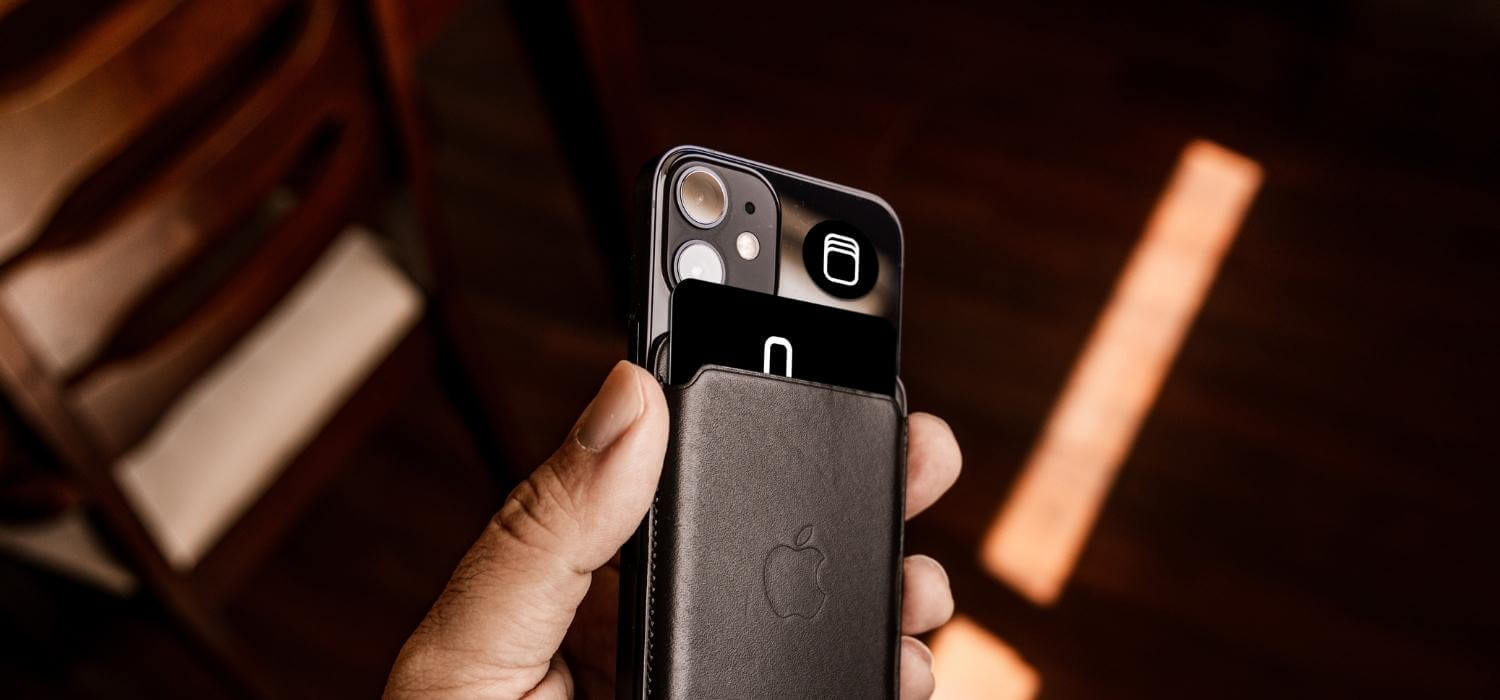In today’s paced era the smooth exchange of information and the conveniences brought by modern technology have become more important than ever.
One of the leading advancements in this revolution is NFC (Near Field Communication) a method that promises interactions between different devices.
With all the buzz surrounding NFC, many people have started to question its capabilities particularly when it comes to NFC wireless charging.
Can NFC truly provide charging solutions? Is it just a misconception? As curiosity grows it’s crucial to differentiate between what NFC’s designed for and how consumers might perceive it.
What is NFC and How Does It Work?
NFC, also known as Near Field Communication, is a set of communication protocols designed to facilitate interactions between two devices when they’re in close proximity typically just a few centimeters apart.
In today’s digital era, NFC has established its prominence. Its primary appeal stems from facilitating secure data transfers, whether for payments, connecting Bluetooth devices, or streamlining user logins. We witness the versatility of NFC in various aspects of our lives, from tap-based exchanges of business card information to effortless smartphone pairing.
However, beyond these applications, there is growing curiosity about the potential of NFC wireless charging. Given the buzz within the tech community regarding such solutions, it’s only natural to delve into NFC’s capabilities in this domain. Consequently, the NFC Forum has standardized NFC wireless charging technology.
In this exploration, we will delve into the relationship between NFC and wireless charging while distinguishing facts from misconceptions.
Common Myths Surrounding NFC
Like other technologies, NFC is surrounded by myths and misunderstandings. Whenever a groundbreaking technology emerges, it tends to capture the public’s imagination leading to a flurry of speculations and exaggerated stories.
NFC which stands out as one of today’s leading communication protocols is not immune to these narratives. Some people think NFC can do things like boil water, or even change the way we use electricity. One popular belief is that NFC can transfer large files like movies in seconds. In reality, NFC is designed for smaller data exchanges, like payment information or digital business cards. Another myth is that NFC can work over long distances, similar to Wi-Fi or Bluetooth.
Some even think that using NFC can drain your phone’s battery quickly, but in most cases, NFC uses minimal power and has little impact on battery life. But when we look closely at NFC, it’s important to know what’s real and what’s just a story. It’s exciting to think about NFC in big ways, but we should stick to the facts to truly understand what it can do.
Where NFC Shines: How NFC Becomes Real-World Applications
NFC known as Near Field Communication has gone beyond being a passing trend, in technology. This technology’s strength is evident in how it has transformed tasks and brought efficiency to industries. Bluetooth devices were a step process. NFC devices can instantly communicate with each other, simplifying the pairing procedure.
Similarly, the widespread adoption of contactless card payments that many of us now take for granted can largely be attributed to NFC’s capabilities. Just imagine the convenience of tapping your card on a payment terminal and seeing the transaction go through instantly thanks to NFC’s power. Beyond payments, this incredible technology is also enhancing our interactions.
If you want to share photos or videos with your friends? Simply bring two NFC-enabled devices close together. You can also use NFC in a professional industry to share your social media links, contacts, CVs, or portfolios! Moreover, NFC has introduced an era where even static objects like posters become platforms. Imagine walking past a movie poster that intrigues you and with a tap of your NFC-enabled device you’re presented with the film’s trailer, reviews, and showtimes.
Read more: How to Activate NFC On iPhone 14? Complete and Easy Guide
The Truth About NFC and Wireless Charging
We know that NFC has found a place in today’s evolving world of technology. However, there is often confusion about the extent of energy transfer that accompanies this data communication. When we delve deeper into how NFC works we discover that it does involve some energy transfer. However, this transfer is limited in scale.
Specifically tailored to its purpose; transmitting data. They can draw a burst of energy from an NFC communication enabling them to transmit data without the need for a power source. On the other hand, if we shift our focus towards charging, particularly for larger devices such as smartphones or tablets the energy requirements are on a completely different level.
These gadgets need an amount of energy for wireless charging, far beyond what NFC is designed and capable of providing. Therefore, although the appeal of NFC wireless charging is easy to understand considering our growing dependence on technologies, it is important to recognize that NFC primarily serves as a valuable tool for quick and secure data exchange rather than a method of significant power transfer.
While NFC wireless charging might not power up our larger gadgets, it’s perfect for smaller wearable devices. This is because these smaller gadgets don’t require as much energy as, say, a smartphone or tablet. Examples of where NFC wireless charging shines can be seen in products we use daily :
- Smart Glasses: These devices benefit from NFC wireless charging primarily because of their design. They are lightweight, making them ideal for short charging intervals provided by NFC. Plus, given their typical usage patterns, they don’t require a large battery, so NFC’s energy is sufficient for their daily operations.
- Fitness trackers: These wearable devices, which monitor our steps, heart rate, and sometimes even our sleep patterns, have become integral to our daily lives. Their compact nature and the fact that they handle less complex tasks compared to other gadgets mean they have lower power demands. Hence, recharging them using NFC is not only possible but also efficient.
- Styluses: Often used in conjunction with digital tablets or large touchscreens, styluses typically have minimal power needs. They’re designed for precision rather than power-intensive tasks. NFC wireless charging suits them because it offers a quick and convenient way to top up their charge without the need for cumbersome cables or docking stations.
These items don’t require the intense energy that bigger devices do, making NFC wireless charging a fitting solution.
Read more: How To Use NFC Features For Smartphones?
Devices Equipped with NFC: Do They Also Support Wireless Charging?
In today’s world of technology, NFC-enabled devices have become incredibly common. Smartphones, tablets, wearables, and even some laptops now come equipped with NFC chips. While NFC and wireless charging can coexist in the device they operate using technologies. While NFC technology has become increasingly common in many of today’s devices, especially for applications like contactless payments and seamless device pairing, it’s essential to clarify that the presence of NFC doesn’t automatically equate to support for wireless charging.
For instance, a smartphone may be NFC-enabled, allowing for functionalities such as quick data transfers and hassle-free device connections, but this doesn’t necessarily imply it can be charged wirelessly. Therefore, before making assumptions, it’s always a wise move to delve into the technical specifications of a device. Many leading smartphone manufacturers, including giants like Apple, Samsung, OnePlus, Motorola, and Huawei, have integrated wireless charging into their handphones
However, for devices that don’t come with this feature out of the box, there’s still hope. There are wireless charging adapters on the market designed to give such gadgets the ability to charge wirelessly. So, while NFC and wireless charging might sometimes overlap in discussions, understanding their distinct functionalities and features is key to maximizing your device’s potential and avoiding potential mishaps.
NFC vs. Qi Technology: Dissecting the Differences in Wireless Charging
When we discuss interactions between devices two technologies often come to mind; NFC (Near Field Communication) and Qi wireless charging.
Unlike NFC, Qi is specifically designed to power devices. The mechanics behind Qi charging and NFC differ fundamentally. Although they may seem similar at a glance in their ability to offer capabilities without connections their core functionalities diverge.
Qi is deeply rooted in power delivery while NFC excels in rapid and secure data communication.
Although both involve capabilities they have purposes and functions based on different principles.
Primary Objectives
NFC: The main goal of NFC is to facilitate communication between two devices that are placed together. Its primary focus is not on power transfer.
Qi: On the other hand, Qi is a standard specifically designed for charging.
Range & Proximity
NFC: As implied by its name NFC requires the devices to be in proximity to each other typically within a few centimeters.
Qi: Qi wireless charging pads require devices to be placed directly on them ensuring that the device is properly positioned for power transmission.
Transmission Mechanism
NFC: It operates by establishing a field between two loop antennas when they’re in close proximity.
Qi: Uses charging principles wherein power is transferred across coils, in both the charger and the device being set.
Different applications
NFC: Commonly used for making contactless payments, sharing data quickly, and utilizing tags.
Qi: Specifically designed for charging devices such as smartphones, earbuds, and wearables.
In summary, although NFC and Qi may occasionally coexist in the device and provide functionalities they are separate technologies created for various purposes.
So if NFC isn’t the player in charging for now, this is where innovations like Qi (pronounced ‘chee’) wireless charging come into play.
In conclusion, while NFC has brought about changes in device communication when it comes to wireless charging capabilities platforms, like Qi are the true pioneers.
Conclusion
Within the evolving landscape of technology, there is one standout element; NFC (Near Field Communication). While some may hope or assume that NFC wireless charging can serve as a charging solution its true strength lies in close-range data communication.
As impressive as NFC is, it isn’t designed to be the method for charging larger devices, like smartphones or tablets. By doing so we can appreciate its contributions while turning to dedicated technologies when seeking wireless charging solutions.
In this changing era it is vital to keep ourselves updated and maintain a sense of curiosity. By examining misconceptions and exploring the essence of cutting-edge technologies such as NFC wireless charging, we can face the future with self-assurance. Don’t miss out on our other blogs about technology and professionalism. Check out our other blog here!


